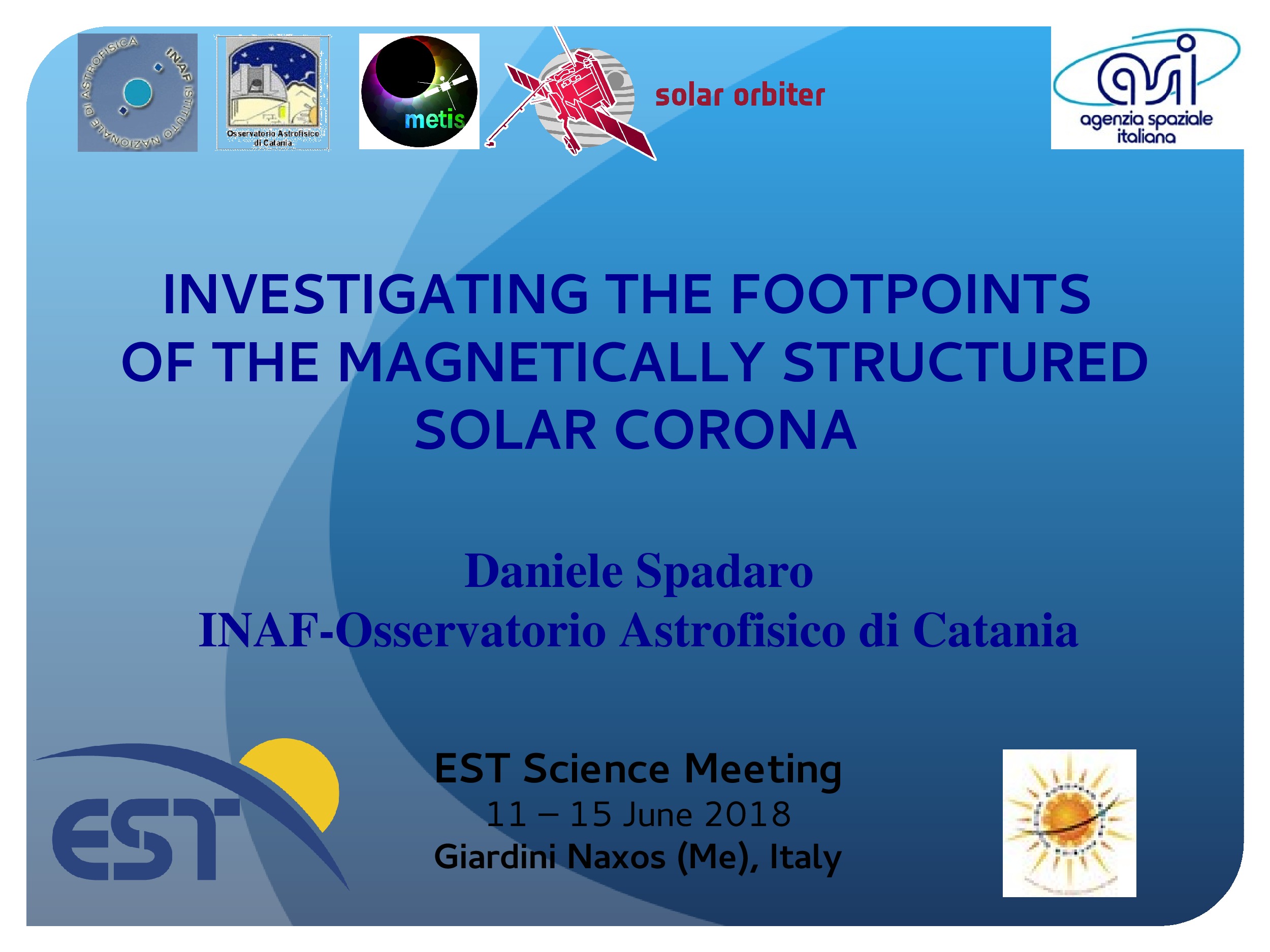Date of upload:
19.06.2018
Abstract:
Observations of the solar corona during the past decades have clearly shown that this region of the solar atmosphere is bound to follow the structure and evolution of the solar magnetic fields. They form in the sub-photospheric convection zone and subsequently emerge in the photosphere, chromosphere and corona, so characterizing the entire atmosphere as a highly coupled system.
The physical properties of various coronal structures (loop systems, coronal holes, streamers, prominences, etc.) indeed depend on the intensity and configuration of the magnetic fields filling the corona. The topology of such fields, in turn, is bound to follow the driving provided by photospheric flows. Significant and rapid changes of the magnetic topology, on the other hand, can cause high energy explosive events occurring in the solar corona, such as flares and eruptive prominences, that in turn may give rise to coronal mass ejections, phenomena with high impact on the space weather.
This presentation will concentrate on some typical coronal structures whose physical understanding and modeling is crucially related to a detailed knowledge of the flow fields and magnetic fields, and of their interaction, at the bottom boundary. It will also attempt to put into evidence the role that a 4-m class aperture solar telescope can have in addressing these science topics, thanks to its optical design capable of investigating the active Sun at very high spatial and temporal resolution, and unprecedented polarimetric sensitivity.
